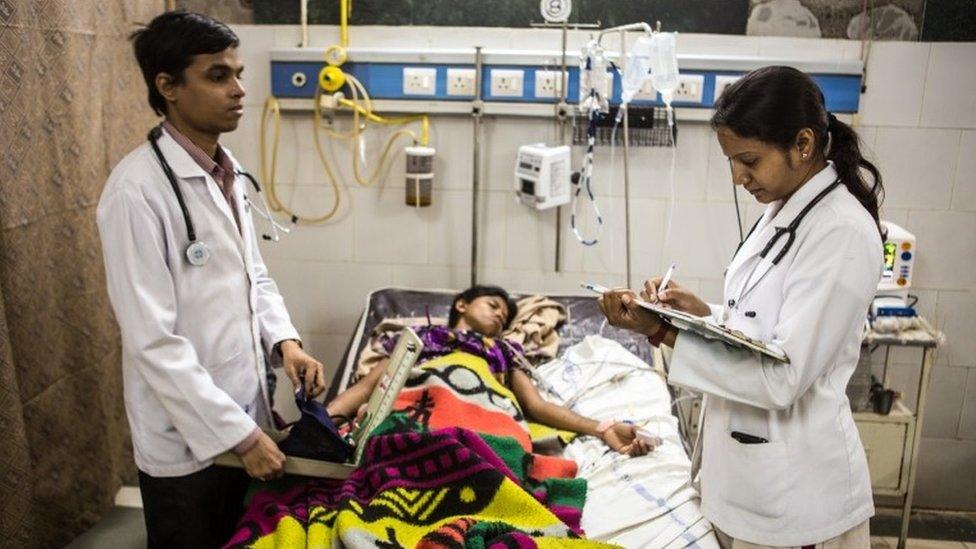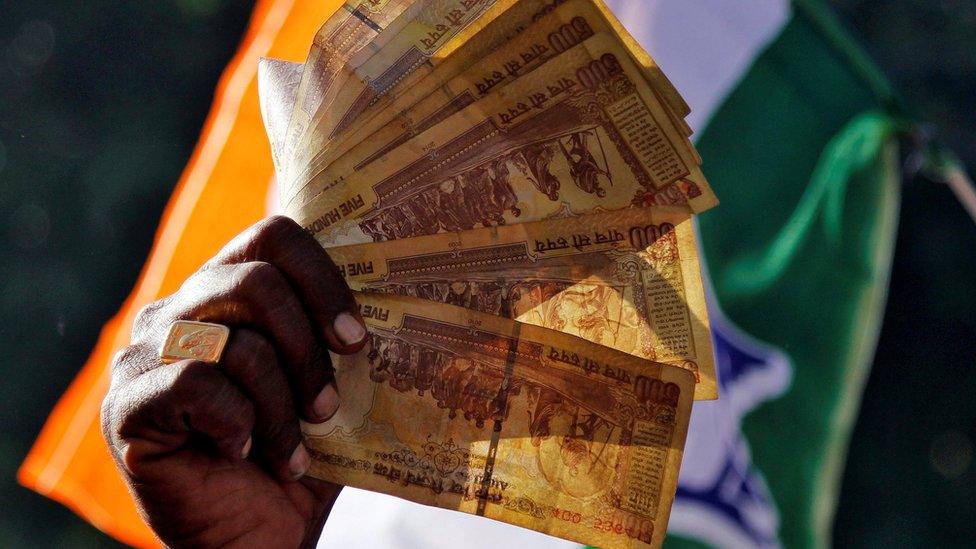India unveils 'world's largest' public healthcare scheme
- Published

India spends a little over 1% of its GDP on public healthcare, one of the lowest in the world.
India has announced an ambitious health insurance scheme, which is designed to be a safety net for millions of people who struggle to afford medical care.
It's thought to be one of the largest such schemes in the world, and is likely to be popular with rural voters.
India presently spends a little over 1% of its GDP on public healthcare, one of the lowest in the world.
The announcement came in the annual budget, aimed at boosting growth ahead of a general election next year.
Finance Minister Arun Jaitley also allocated billions of dollars for health, education, social security and rural infrastructure.
He said the flagship health insurance scheme would cover more than 100 million poor families and provide 500,000 rupees ($7,825;£5,520) in medical coverage for each family annually.
"This will be the world's largest government-funded healthcare programme," Mr Jaitley told parliament in his speech.
"The government is steadily but surely progressing towards a goal of universal health coverage."
The BBC's Soutik Biswas says although it is laudable to give medical coverage to the poor in a country where quality healthcare costs are prohibitive, what is not clear is how this programme is going to be designed to protect the poor from being exploited by private hospitals.
India's private healthcare system is largely unregulated, opaque and often unscrupulous. It also overcharges patients with impunity, our correspondent adds.
"Private hospitals also have a long history of being hostile towards the poor, and not allocating enough mandated cheap beds for them," he says.
"It is not clear how the government will be able to get around this problem - and where the funds from the scheme will come from."

Winners and losers of India's budget
Devina Gupta, BBC News Delhi
This was a budget for the rural economy with distressed farmers and villagers emerging as the biggest winners. But the finance minister also outlined incentives for others that will help boost growth, create jobs and promote private investment.
The government's new National Health Protection Scheme could be a game changer for as many as 500 million people in need and unable to afford healthcare.
But consumers will be affected. Despite Prime Minister Narendra Modi warning against the threat of global protectionism just last week in Davos, he has approved increased custom duties on foreign phones and televisions.
The Indian government hopes that this will boost local manufacturing in India but tech giants like Apple and Google are bound to lose out too unless they shell out more money to open local manufacturing units.
The lowering of corporate tax on small and medium business could boost employment.
But on the whole, industry watchers in Delhi have not been very impressed. Some described the policies as 'token' without much substance.
And without any change in income tax rates and few incentives for the salaried middle class, they will not be the only ones disappointed with this year's budget.

Mr Jaitley added India's $2.5 trillion economy was "firmly on path to achieve 8% plus growth soon".
Earlier this week a government forecast said India's growth rate is set to rise over the coming year after a prolonged slowdown.
The country's slowdown has been blamed on several factors, including declining exports, falling private investment and declining farm incomes.
Also the sudden cancellation of nearly 86% of the cash in circulation in November 2016 - the effect lasted until 2017 - and glitches in the rollout of a single Goods and Services Tax (GST) had a severe impact on growth.
- Published1 February 2017

- Published31 January 2017
